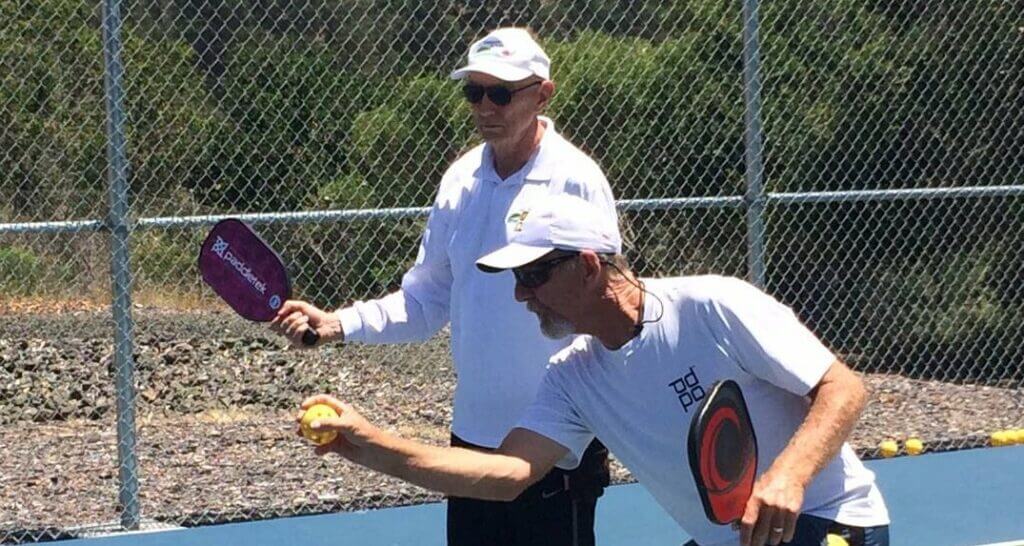by Jenny Foster
Although most pickleball players are probably aware of the 3rd shot drop, they may be oblivious to the fact that it comes in three types: no spin, underspin, and topspin drops. A normal 3rd shot drop can be done without a spin, but for those who want up their game, the underspin and topspin 3rd shot drop may come in handy. To improve the 3rd shot drop skills, a pickleball player should learn about the shape and height of a 3rd shot drop. Notably, these two factors will vary depending on the type of 3rd shot drop.
Before learning about the advanced types of 3rd shot drops, pickleball players should realize first this shot should not always land on the kitchen in the opponent’s court. Instead, the 3rd shot drop should force the opponent to hit the ball upward, which decreases the force or intensity of their return compared when hitting the ball in a downward direction.
In addition, when trying to land a 3rd shot drop, the ball should not be too close to the net. Instead, the ball should be at portion (a quarter or third) of the kitchen near the non-volley zone line. Meanwhile, if the opponent manages to volley the ball, it doesn’t mean that a pickleball player has made an error in their 3rd shot drop. In this case, the drop is still considered a good shot if the opponent hits up at the ball.

One important thing to take into account when hitting a 3rd shot drop is the height of the ball from the net. The ball should not be too low to avoid hitting the net, but its margin should also not be too high to avoid giving the opponent an opportunity to hit down on the ball. Several veteran players claim that a height of 1-3 ft from the net should be ideal for the 3rd shot drop.
- UNDERSPIN 3RD SHOT DROP
The underspin 3rd shot drop can be done with forehand or backhand. In forehand underspin drop, the arc of the ball is slightly higher, whereas a slightly lower arc is observed with the backhand underspin drop.
- TOPSPIN 3RD SHOT DROP
Considered by some pros as an advanced level shot, the forehand topspin 3rd shot drop is very effective in getting the ball inside the opponent’s court. In addition, the ball goes down faster, and the opponent experiences difficulty in gauging the depth of the ball as it goes over the net.
Compared with the forehand underspin drop, the forehand topspin drop results in a higher ball arc and faster speed. Notably, the forehand topspin drop effectively forces the opponent to hit up at the ball, which opens up an opportunity for a player to come up to the net.
